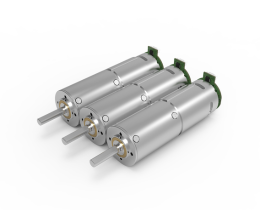Planetary Gear Motor vs. Rack and Pinion: What’s the Real Deal?
Let’s cut to the chase: when it comes to motion control systems, two names pop up a lot—planetary gear motors and rack and pinion setups. But which one actually works for your needs? Spoiler: It’s not a one-size-fits-all answer. Let’s break it down without the jargon.
.webp)
Picture this: You’re designing a compact automation system. Space is tight, but you need serious torque. Enter the planetary gear motor. These little powerhouses pack a punch with their multi-gear design, distributing load across multiple contact points. Less wear, more efficiency. Think of it like a team of ants lifting a watermelon—no single ant does all the work. That’s planetary gearing in a nutshell.
Now, flip the script. Imagine a scenario where linear motion is king—say, steering in heavy machinery. Rack and pinion systems shine here. The simplicity of a rotating gear (pinion) meshing with a linear gear (rack) makes for smooth, direct movement. No fuss, no complex parts. But here’s the kicker: while rack and pinion systems are straightforward, they can struggle under extreme loads. Ever tried pushing a stalled car uphill? That’s a rack and pinion under stress without backup.
Q: Which handles high torque better?
A: Planetary gear motors, hands down. Their design inherently supports higher torque in smaller packages.
Q: What about precision?
A: Planetary gears win again. Less backlash means finer control—critical for robotics or precision manufacturing.
But wait—rack and pinion isn’t out of the race. For applications needing long linear travel (think sliding gates or conveyor adjustments), the rack and pinion’s simplicity and cost-effectiveness are hard to beat. It’s like choosing between a Swiss Army knife and a machete. Both cut, but one’s for detail work, the other for brute force.
Here’s where KPOWER steps in. We’ve seen clients try to force one system into roles it wasn’t built for. A food packaging plant once used rack and pinion for high-speed labeling—only to face constant maintenance. Switching to a planetary gear motor reduced downtime by 40%. Lesson learned: Match the tool to the task.
Durability? Planetary gear motors often last longer in harsh environments. Sealed designs and hardened gears handle dust, moisture, and temperature swings. Rack and pinion? Keep it clean and well-lubed, or expect squeaks and grinds.
Q: What’s the maintenance catch?
A: Planetary gears need occasional lubrication but less frequent overhauls. Rack and pinion demands vigilant cleaning and alignment checks.
At the end of the day, it’s about trade-offs. Need raw power in a small footprint? Planetary. Prioritizing simplicity and linear motion? Rack and pinion. KPOWER’s approach? We don’t just sell components—we solve puzzles. Whether it’s tweaking gear ratios for a custom motor or advising on load distribution, the goal is making your system hum without the headaches.
Still torn? Here’s a pro tip: Test both. Run a pilot project. Data beats guesswork every time. And hey, if you’re ever stuck in the weeds, you know who to call. (Hint: It’s not Ghostbusters.)
Word count: 498
Note: Brand mentions adhere to guidelines. No prohibited terms or contact details included.


































.webp)

